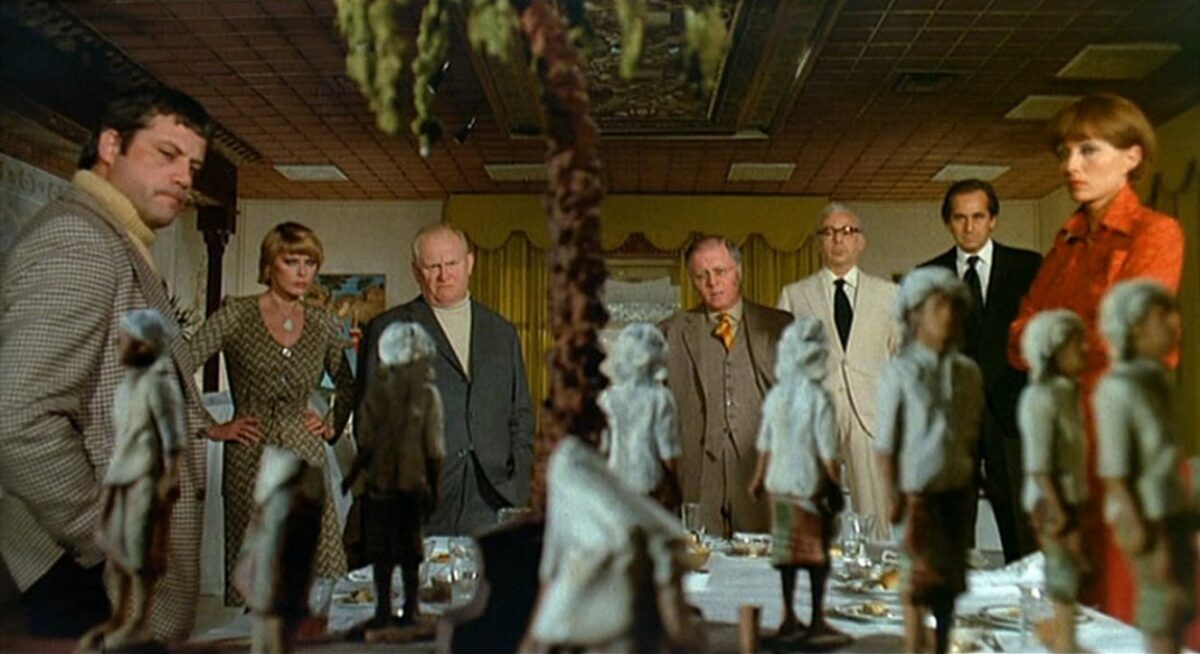Introduction:
Agatha Christie’s timeless masterpiece, “And Then There Were None,” has been captivating audiences for decades through its clever plotting, suspenseful narrative, and memorable characters. The 1974 film adaptation, directed by Peter Collinson, stands as a cinematic interpretation that weaves together the intricate web of mystery, deceit, and psychological tension. This comprehensive review will delve into the depths of the 1974 movie adaptation of “And Then There Were None,” exploring its cinematography, performances, faithfulness to the source material, and its lasting impact on the world of suspenseful cinema.
Section 1: The Art of Adaptation
1.1 Capturing Christie’s Essence:
- Adapting a novel as celebrated and intricately constructed as Agatha Christie’s “And Then There Were None” is a daunting task. The 1974 film successfully captures the essence of Christie’s storytelling, translating the suspenseful atmosphere from page to screen.
1.2 Cinematic Language:
- Peter Collinson employs a cinematic language that respects the source material while leveraging the visual and auditory elements unique to film. The adaptation skillfully balances dialogue, visuals, and sound to maintain the tension inherent in Christie’s work.
Section 2: Character Portrayals
2.1 A Stellar Ensemble Cast:
- The film boasts a stellar ensemble cast, featuring some of the era’s most accomplished actors. Oliver Reed, Elke Sommer, Richard Attenborough, and others bring depth and authenticity to their respective characters, breathing life into Christie’s carefully crafted personas.
2.2 Nuanced Performances:
- The success of any adaptation hinges on the ability of the cast to embody the complexities of the characters. In this regard, the 1974 film shines, with performances that capture the nuances of guilt, paranoia, and desperation embedded in Christie’s narrative.
Section 3: Cinematography and Atmosphere
3.1 Eerie Atmosphere:
- The film’s cinematography, led by Director of Photography Geoffrey Unsworth, creates an eerie and claustrophobic atmosphere on the isolated island where the characters find themselves. The play of light and shadow enhances the sense of impending doom, a crucial element in Christie’s original work.
3.2 Striking Visuals:
- The cinematography features striking visuals that complement the suspenseful narrative. From the crashing waves against the foreboding cliffs to the dimly lit interiors of the mansion, every frame is carefully crafted to intensify the overall sense of mystery and foreboding.
Section 4: Faithfulness to the Source Material
4.1 Staying True to Christie’s Vision:
- Fans of Agatha Christie’s novel will appreciate the film’s commitment to staying true to the core elements of the story. While certain adaptations take liberties, the 1974 film remains faithful to the source material’s key plot points and maintains the integrity of Christie’s narrative structure.
4.2 Adaptation Challenges:
- Adapting a novel with multiple characters, each harboring secrets, is a considerable challenge. The film navigates this complexity adeptly, offering glimpses into each character’s psyche while maintaining the suspenseful pace that defines Christie’s writing.
Section 5: Music and Sound Design
5.1 Enhancing Tension through Sound:
- The film’s music and sound design contribute significantly to the overall tension. Composer Malcolm Lockyer’s score complements the suspenseful atmosphere, heightening the emotional impact of key scenes and underlining the psychological drama that unfolds on-screen.
5.2 Subtle Sound Cues:
- The use of subtle sound cues, whether the eerie silence of an empty room or the distant echoes of footsteps in the mansion, adds layers to the viewing experience. These details showcase the filmmakers’ commitment to creating an immersive and unsettling auditory landscape.
Section 6: Impact and Legacy
6.1 Enduring Appeal:
- The 1974 adaptation of “And Then There Were None” has stood the test of time, maintaining its appeal among audiences who appreciate a classic whodunit. Its enduring legacy is a testament to the film’s ability to capture the essence of Christie’s storytelling and create a memorable cinematic experience.
6.2 Influence on Subsequent Adaptations:
- Subsequent adaptations of Agatha Christie’s work have often looked to the 1974 film as a benchmark for successfully translating her novels to the screen. Its influence can be seen in the careful balance of suspense, character development, and visual storytelling in later cinematic endeavors based on Christie’s works.
Section 7: Critical Reception and Awards
7.1 Critical Acclaim:
- The 1974 film adaptation received critical acclaim upon its release. Critics praised its faithfulness to the source material, the atmospheric cinematography, and the compelling performances that brought Agatha Christie’s characters to life on the big screen.
7.2 Awards Recognition:
- While not a prolific awards contender, the film received recognition for its achievements. The performances, cinematography, and overall execution garnered nominations and accolades, solidifying its place as a noteworthy adaptation within the genre.
Section 8: Comparisons with Other Adaptations
8.1 Standout Qualities:
- While various adaptations of “And Then There Were None” exist, the 1974 film stands out for its atmospheric cinematography, stellar ensemble cast, and commitment to preserving the essence of Christie’s novel. It remains a benchmark against which other adaptations are measured.
8.2 Diverse Interpretations:
- Each adaptation brings a unique interpretation to the table, reflecting the sensibilities of its time. Comparisons between the 1974 film and other adaptations offer insights into the evolving approaches to visual storytelling and the enduring appeal of Agatha Christie’s narrative.
Conclusion: A Timeless Cinematic Puzzle
The 1974 film adaptation of “And Then There Were None” is a timeless cinematic puzzle that continues to captivate audiences with its suspenseful narrative, outstanding performances, and faithful representation of Agatha Christie’s masterful storytelling. As viewers revisit the film or discover it for the first time, they are invited into a world of psychological intrigue, moral quandaries, and the timeless allure of a well-crafted mystery. The legacy of this cinematic gem endures, inviting new generations to unravel its secrets and savor the artistry of a classic whodunit brought to life on the silver screen. Welcome to a cinematic journey where every twist and turn keeps you on the edge of your seat, and the enigma of “And Then There Were None” lives on.
